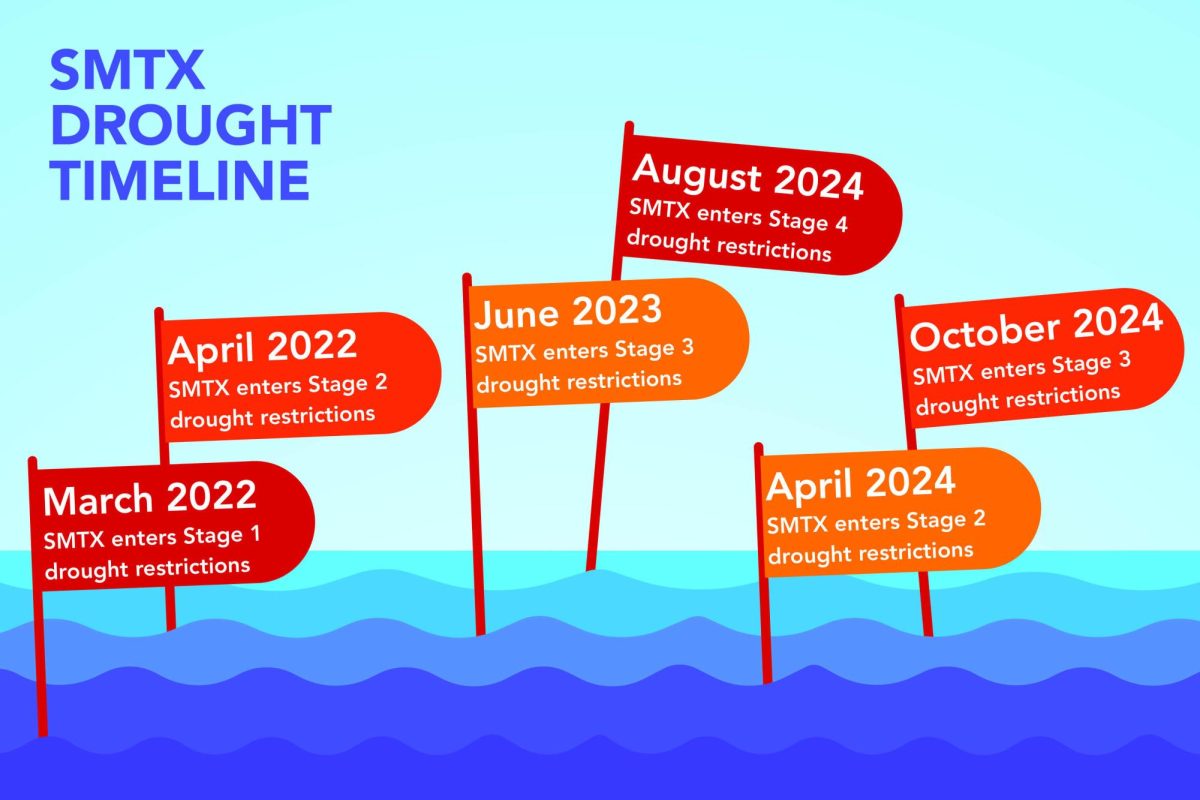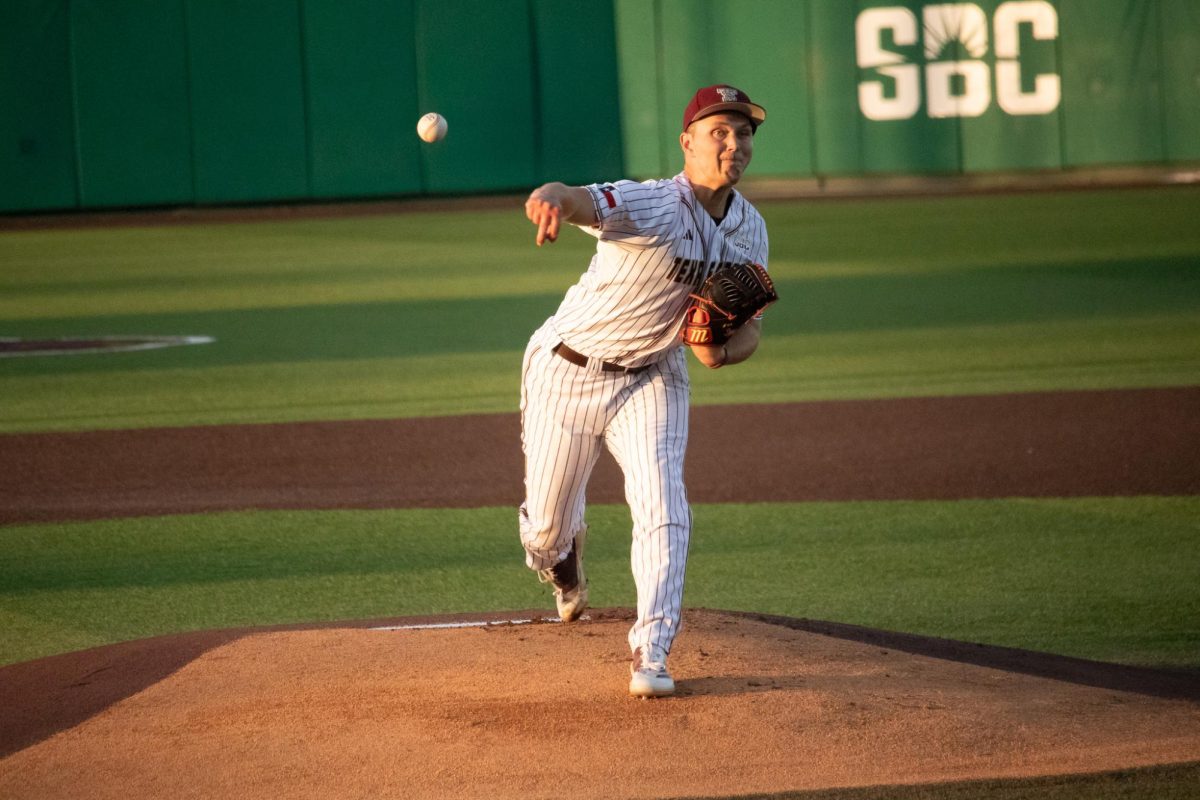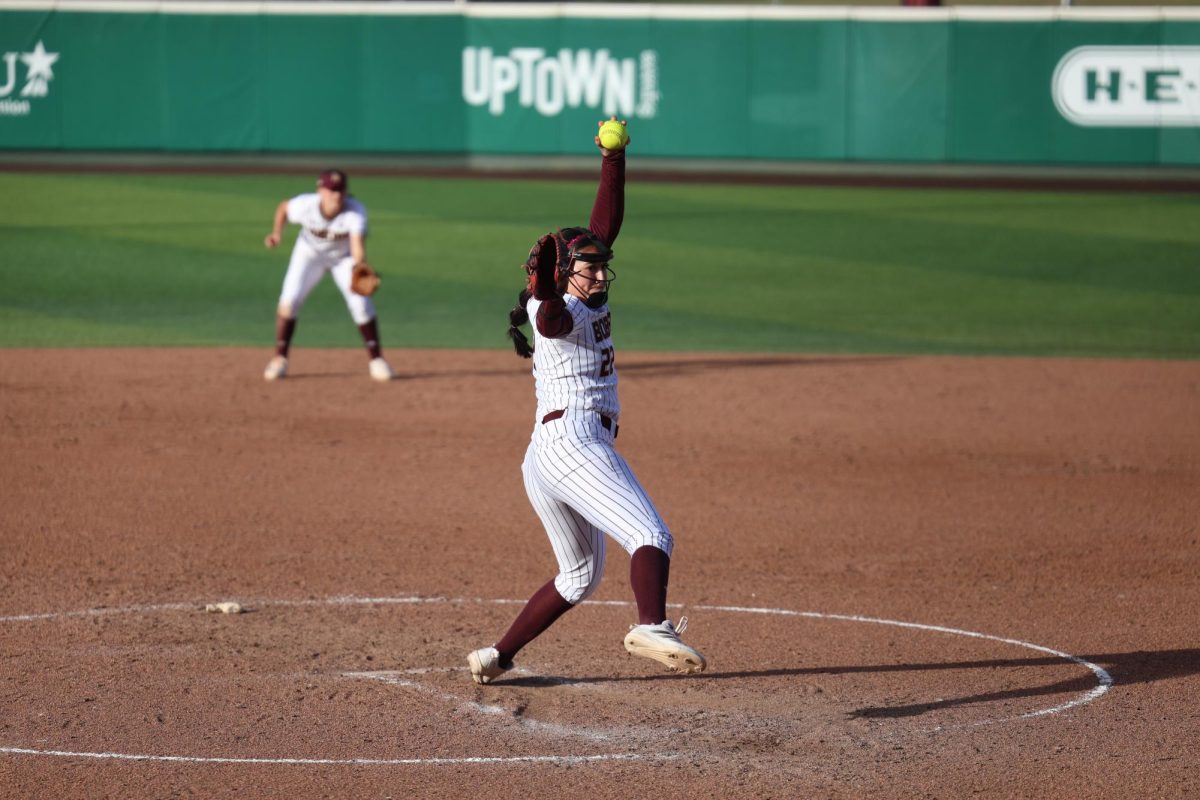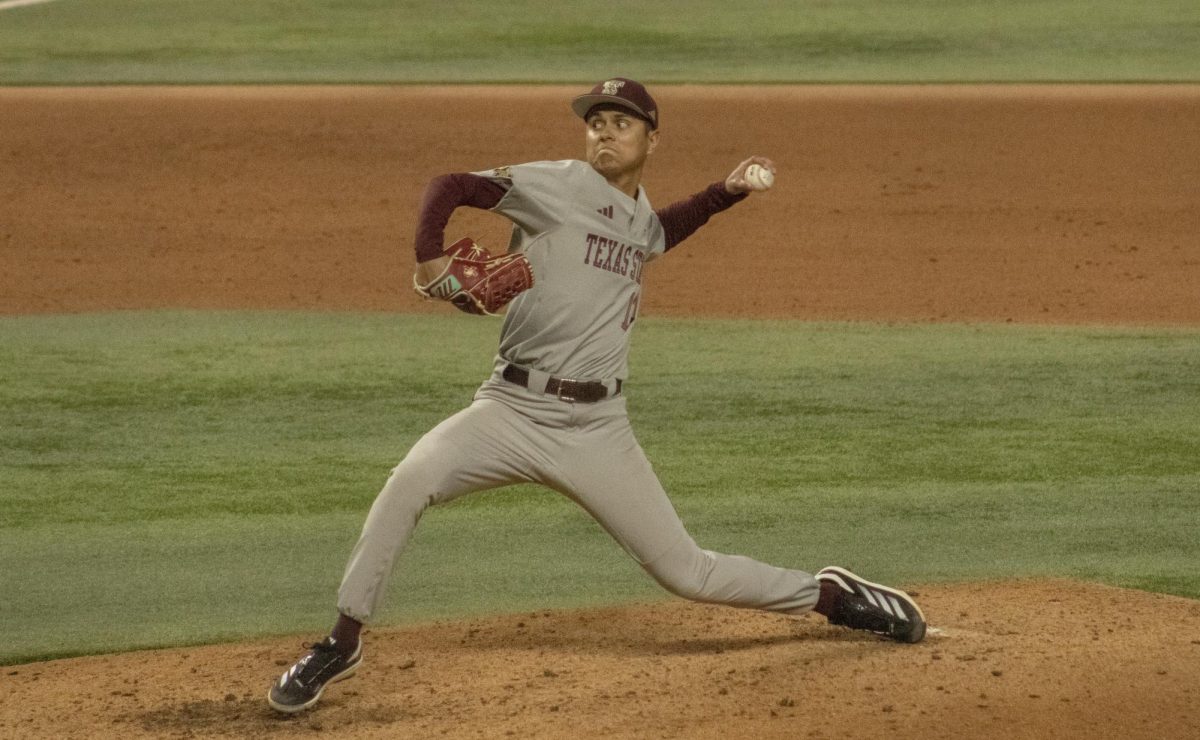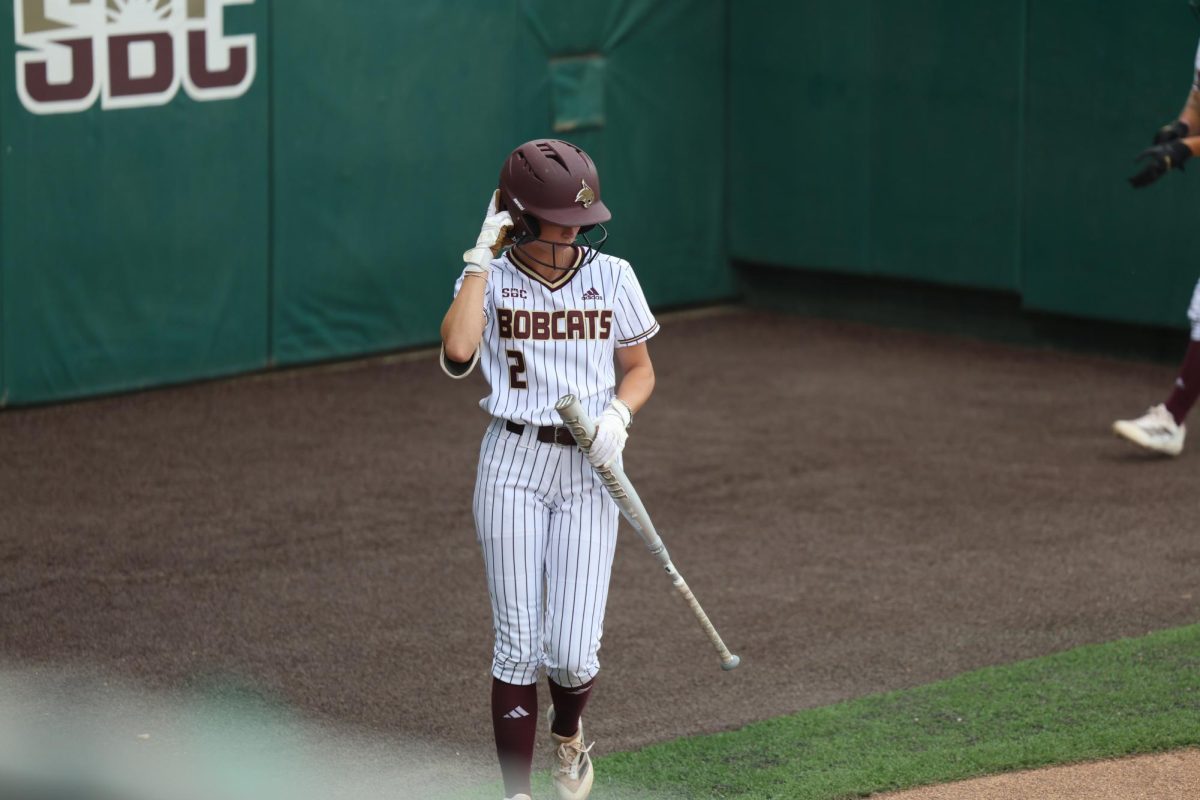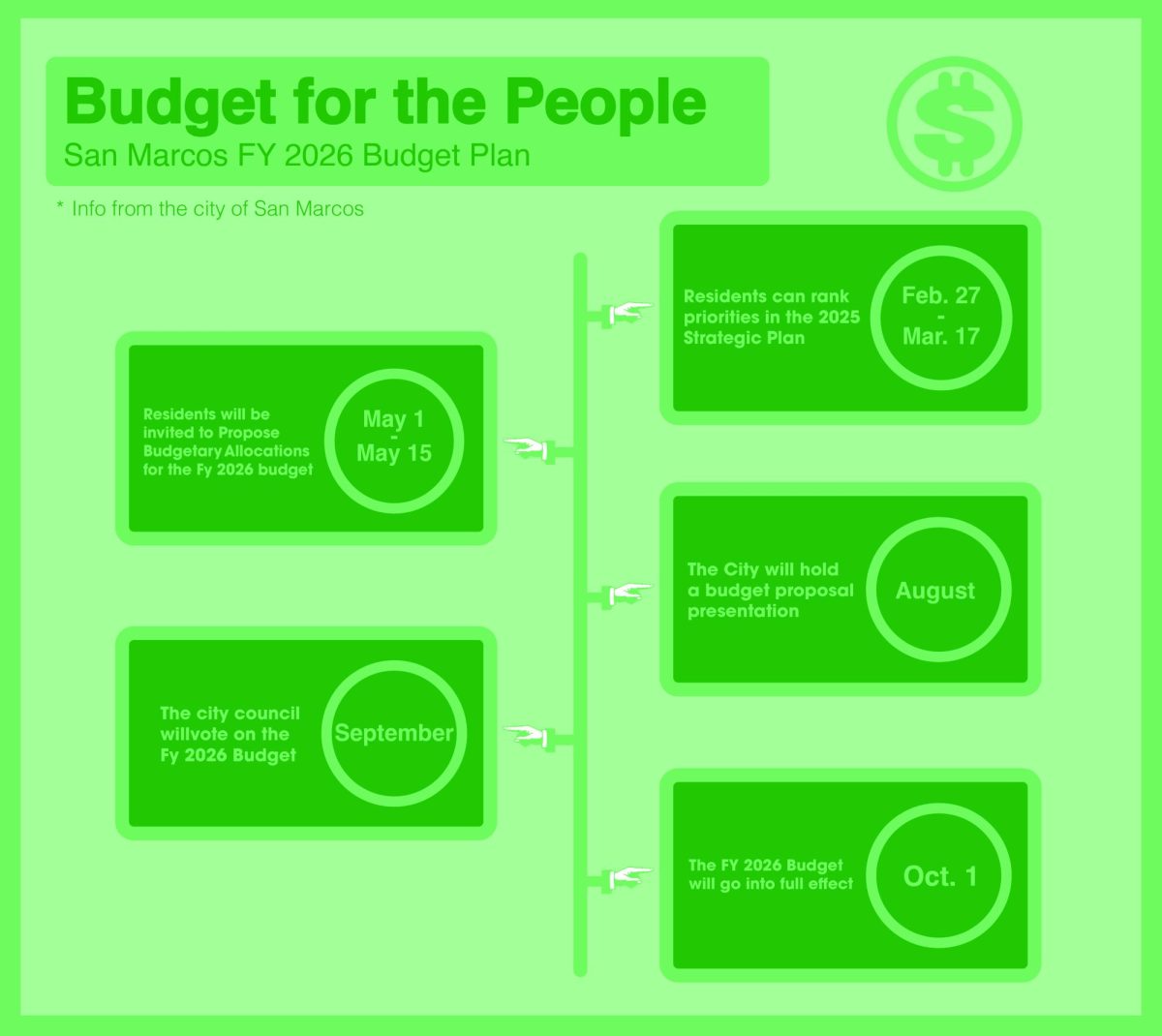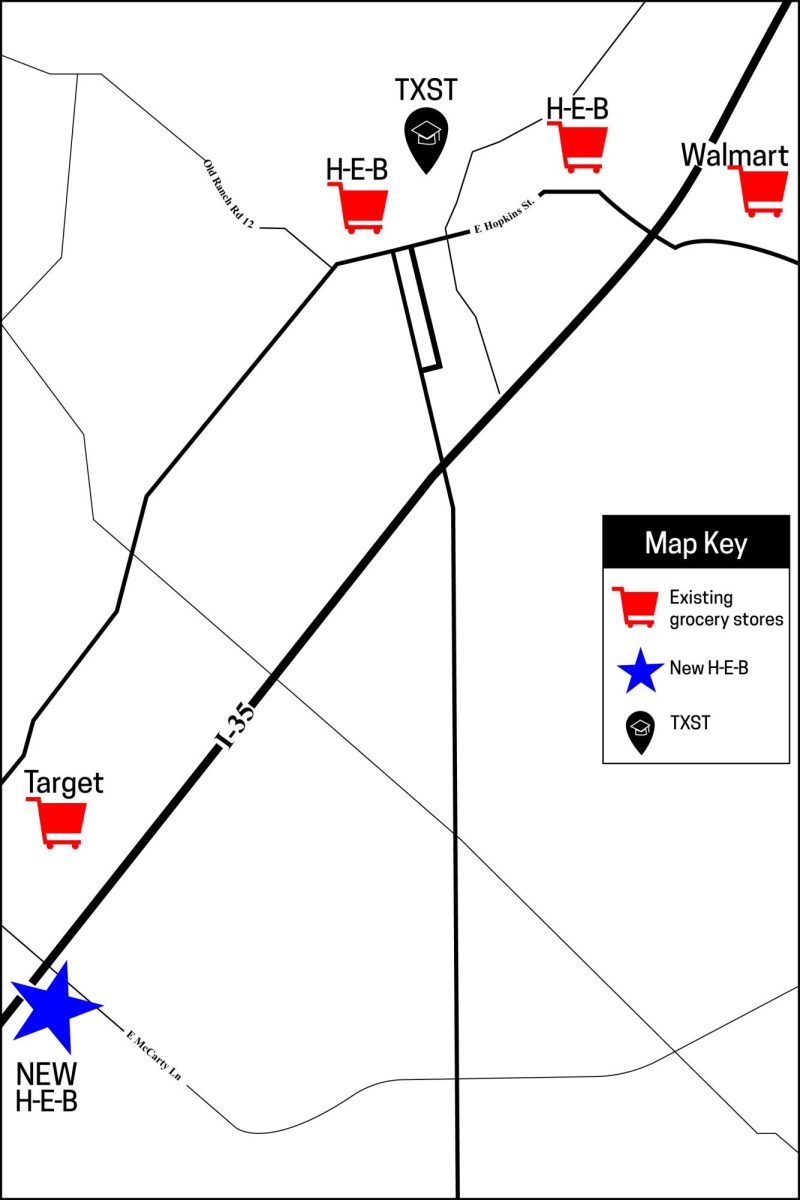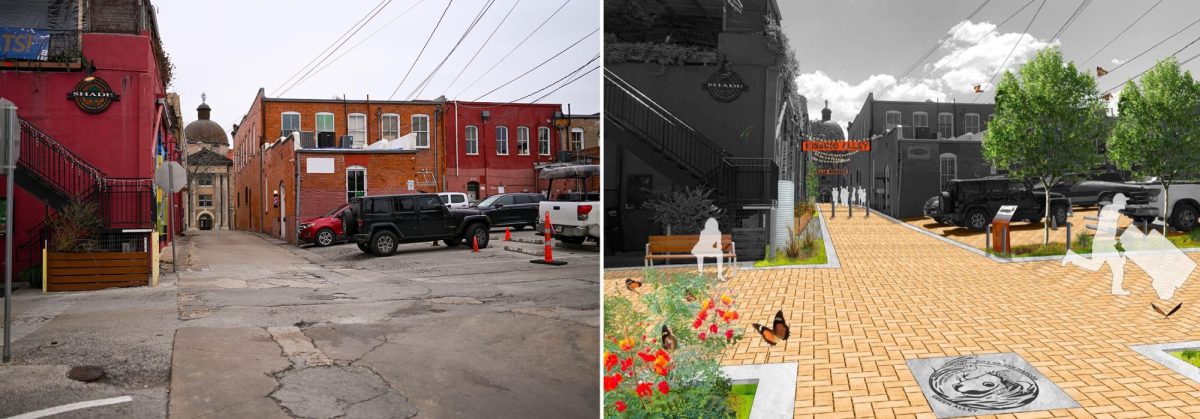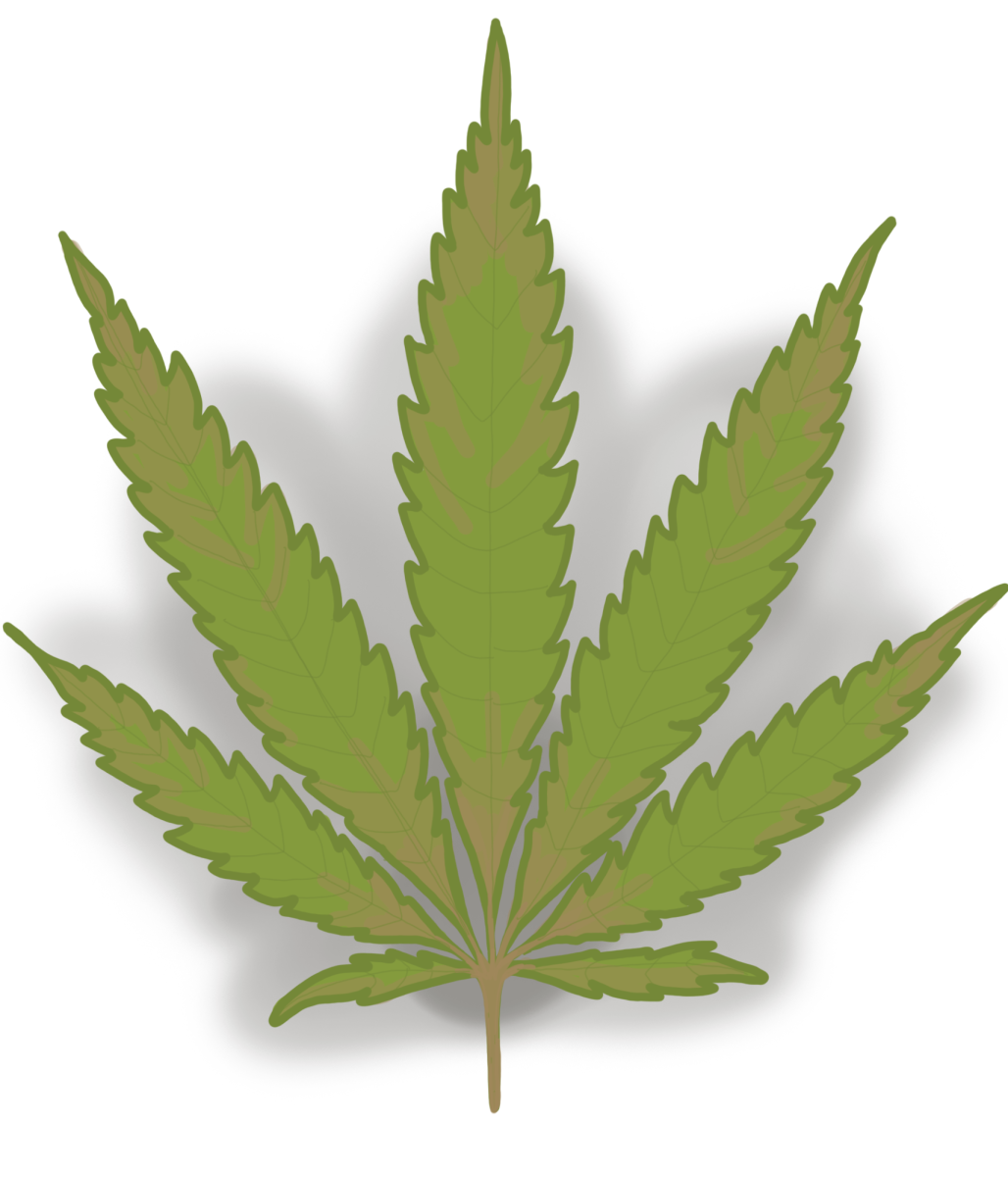San Marcos returned to Stage 3 drought restrictions for the first time since July 2023.
San Marcos entered Stage 3 drought restrictions on Oct. 27 after the water level of the Edwards Aquifer fell below 640 feet above sea level.
The San Marcos River’s flow also decreased to 90 cubic feet per second, nearly half its regular flow rate of 165 cubic feet per second, according to a report by the United States Geological Service (USGS).
Jan De La Cruz, conservation coordinator for SMTX Utilities, said above-average water use combined with low rainfall has worsened the drought.
“[San Marcos’ water] usage is higher than normal this time of year and the weather predictions are not looking good as far as getting badly needed rainfall,” De La Cruz said. “[San Marcos has] been in a drought for a few years now, and we just haven’t had enough rainfall to fill up our water sources.”
As of Oct. 27, the use of hose-end sprinklers is limited to one day every other week, based on the designated weekday tied to an individual’s address. Sprinkler irrigation is permitted only before 10 a.m. or after 8 p.m. on the assigned day, with watering ending by 8 a.m. the following morning. Soaker hoses and drip irrigation systems are allowed once a week, also based on the designated day and time, according to the city press release.
Hand-watering with a bucket or hose is permitted any day before 10 a.m. or after 8 p.m. Additionally, filling new decorative water features remains prohibited, and at-home car washing and foundation watering are restricted to one day per week.
According to De La Cruz, it is unlikely San Marcos will alter its current drought stage anytime soon, but that depends on weather conditions.
“The danger is that if we don’t get additional rainfall over these winter months, and don’t have decent spring flows and river levels next summer – then certainly that could also have a negative impact on the tourism industry,” De La Cruz said.
Robert Mace, the executive director of the Meadows Center, said while the majority of river species are not currently under threat due to the work of San Marcos conservation groups, there are still long-term detrimental environmental effects from the drought.
“The footprint of the river has shrunk due to the low flows… we’ve lost habitat for Texas Wild Rice where the rice used to grow,” Mace said. “The other aspect is that as the river gets shallower recreational activities become harsher on the environment.”
The restrictions are in place to reduce the severity of the drought in the San Marcos area, De La Cruz said.
“The restrictions are all about reducing water usage… and trying to minimize the effects of the drought,” De La Cruz said. “Obviously, we can’t make it rain, but we can try to reduce the water that people are using and minimize the effects of the drought.”
De La Cruz said San Marcos residents play a crucial role in the city’s efforts to reduce water usage during the drought.
Besides following the restrictions, De La Cruz recommends residents be proactive about reducing their water use.
“We’re entering the winter months… [turf] grasses are gonna be going dormant. So a lot of people just choose to turn off their irrigation systems at least on the grass over the winter months,” De La Cruz said. “That’s also a great way to help with this drought by reducing water use.”
Texas State students are also encouraged to reduce water use. The Office of Sustainability recommends limiting showers to 10 minutes and only running dishwashers or laundry machines with full loads.
Mace said the current drought is part of a larger trend affecting the Central Texas area.
“[San Marcos has] been more in drought than not in drought really over the last 20 years,” Mace said.
According to De La Cruz, the city of San Marcos can fine residents who violate drought restrictions, with penalties ranging from $100 to $1,000 for each violation per day.
Residents seeking assistance can call 512-393-8010 for help with water leaks or to be connected with a licensed irrigator who can provide effective water-saving solutions.



